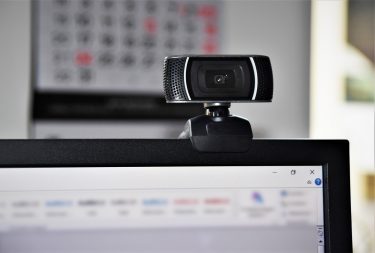February 14, 2022
Best Practices for Remote Delivery of Fall Prevention Programs

The University of Washington Health Promotion Research Center (UW HPRC) has been working with the National Council on Aging to evaluate best practices for remote delivery of evidence-based fall prevention programs because of COVID-19.
Fall prevention remains essential for older adults to stay strong and healthy. During the COVID-19 pandemic, many organizations that were offering evidence-based fall prevention programs closed in-person classes and moved to remote delivery to meet social distancing and safety guidelines. Shifting to remote delivery of an evidence-based fall prevention program comes with a learning curve for organizations, program leaders, and participants.
Remote delivery will also likely continue beyond the pandemic for more equitable access to these programs.
This project is known as Piloting the Remote Delivery of Falls Prevention Programs. It is led by the National Council on Aging thanks to funding from the U.S. Administration on Community Living. The UW HPRC conducted the evaluation for this project, including interviews with program administrators, staff, instructors, and leaders. With guidance from those interviews, the center assessed what helped or created barriers during remote delivery. From there, the National Council on Aging and the UW HPRC created this list of best practices.
Best Practices
Below are the recommended best practices for organizations to support program administration, leaders, and participants of evidence-based fall prevention programs.
Administrative Decisions & Considerations
- Plan for increased implementation needs regarding program preparation, paperwork, and staff time.
- Creating a streamlined, efficient system for collecting forms and pre-screening information can decrease the burden on staff. This could include online forms, fillable PDF forms, or collecting information by phone.
- Partner with other regional organizations to engage and serve a broader geographic area, connect waitlisted participants with classes held elsewhere, and ensure all partnered organizations have enough participants to hold their classes.
Preparing & Supporting Program Leaders
- Meet with leaders and discuss their comfort level with remote programming. Some leaders may not want to do a remote version of the class or may have specific reservations.
- Communicate with leaders about what they need to begin remote programming. This may include additional training, a cheat sheet for common technical difficulties, or instrumental materials such as an external microphone or wide-angle web camera.
- Check-in with leaders regularly, because their needs may evolve over time and/or they may have insight to share.
Preparing & Supporting Program Participants
- Have a leader, observer, or staff member available during classes to help participants troubleshoot technology issues over the phone. This allows issues to be resolved quickly and without disrupting the class.
- Give participants extra time for socializing, because social connections can be more difficult to foster than when delivering a program in-person.
- Open the virtual classroom early or keep it open after the class is finished.
Accessibility: Technology Considerations
- Meet with participants one-on-one or in a group before the course begins to cover how to use the video conference platform and what accommodations they might need. This is not required for all remote program delivery, although it is helpful.
- Develop a device library where participants can check out a tablet or computer for the duration of the course.
- Set up a room in your organization’s building with devices and space for one or two participants to use during classes.
Accessibility: Visually Impaired
- Provide large print course materials.
- Recommend program participants use larger screens, such as a laptop or computer instead of a tablet. If possible, they could also connect their device to their TV for an even larger screen.
- Encourage program leaders to wear clothing that contrasts with their background so they are easier to see during programs with standing exercises.
Accessibility: Hearing Impaired
- Use a live, auto-generated closed captioning system.
- Set course norms around non-verbal communication during classes. This could involve creating a few basic hand signals to convey commonly used words or phrases, such as “stop,” “got it,” or “please repeat that.”